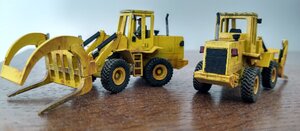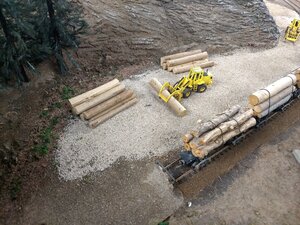Not to say that the operation was flawless. The volume regularly overloaded the capacity of the tracks. The whole area was coastal wetland ground, mostly sand, so the track was very unstable, adding lots of heavy loaded cars, the track was always sinking. Every car out of DOW had to be weighed and the scales were always having to be maintained because the track shifted. I was talking over old times to a friend who was a trainmaster back then and he was telling a story about where one of those big 4 truck whale belly tank cars rolled over because the track gave way and how they pumped lime under the track for days trying to stabilize it.
I think thats partly correct , and soil may have been a contributing factor , but Plant A was constructed prior to WW I , and the radius of the curves were tight. , and it rolled over in the turn(the weight of the car was not over the track) . I believe it may have been carrying ammonia at the time .
Every car at Plant A might have been weighed. But Dow had 3 plants , A ,B ,and Badiche ( now BASF ) . The scales are at A.
Part of my information comes from the Yard Superintendent and unamed Brakeman . I happened to be in store across the street from where the station was and they walked in , the subject of the Dow switcher came up , I was told its was kept far enough south that you couldn't see it from passing freight , apparently road crews were not considered "reliable".Theres a dip in the track and curve south of town.
One of the towns near Dow was wet and Angleton and most other towns in Brazoria were dry . To get something done , Beer becomes an acceptable form of currency. I dont know or remember how dry Angleton was I don't know if transport it for your own consumption (I think it was limited to 2 six packs ) , but being the county seat , full of city police, sheriffs deputies and DPS with nothing to do but run up and down 521/288 all day long ...people become industrious and find other modes of transportation , You can buy alot with a 6-pack .
I wonder if six pack was sitting on the end sill of tanker , who's cars would get picked up first?
It all depends on how bad someone wants a beer , in bone dry town. Some people get thirsty at 104 in the shade.
I never witnessed any thing change hands but then the town went wet in 70's .
The Dow (Alco) switcher was scrapped about 3 miles south of the Angleton Yard , Where it died , It sat on a siding for several months before Dow cut it up in situ ,They hauled it out on on flat bed semis.



